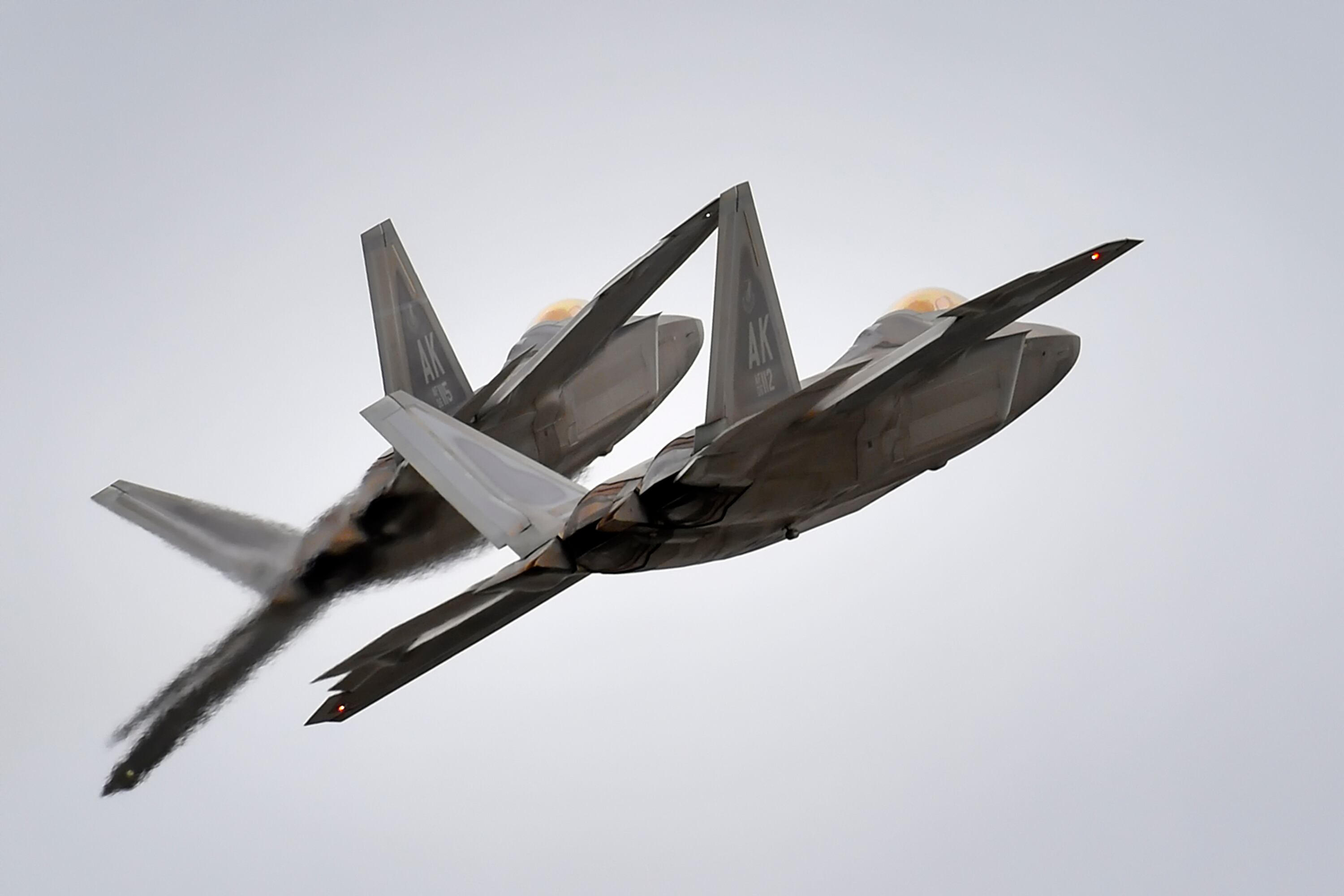The Air Force’s newest multi-role fighter, the F-35 Lightning II, could deploy to Iraq and Syria very soon if called upon, and before too long will be sent around the world before too long, said Gen. Hawk Carlisle, the head of Air Combat Command.
"The minute I declare initial operational capability, if the combatant commander called me up and said, 'We need F-35s,' I would send them," Carlisle told reporters on Capitol Hill Wednesday.
The much anticipated, much delayed, very advanced and very over-budget F-35 is set to finally reach IOC sometime in the last five months of the year, as the Air Force has been working to gear up training and maintenance capabilities for the new plane.
Reports indicated
that
the plane might not reach operational capability until near the end of 201
5
6 due to problems with its onboard software. But Carlisle said fixes have been made and the plane is almost ready to go.
"We’re not quite ready yet, but things are going very well in the program," he said. "I see it at the front end of that August to December window."
At that point, the Air Force will officially offer the plane’s use to combatant commanders, including Central Command leader Army Gen. Joseph Votel.
"I would tell him what its capabilities were," Carlisle said. "If he said I need that capability then I would deploy."
The F-35 is also part of plans for
likely to find its way to
Europe, the general said. Deployments would mirror the "Rapid Raptor" reassurance program, where F-22s traveled to partner nations in Eastern Europe — both for training and to send a message to Russia.

Two F-22 Raptors from Joint Base Elmendorf-Richardson, Alaska's 3rd Wing conduct approach training March 24, 2016.
Photo Credit: Justin Connaher/Air Force
Carlisle said he wants to get the plane’s "dynamic presence" into the theater.
"As soon as I get F-35s operational, I’d like to do it with the F-35 as well to demonstrate that I can move those airplanes anywhere that I need to as rapidly as I can to support combatant commanders’ needs, whether it’s in a peace time training environment, messaging to a potential adversary, or, if we ever had to, in case of conflict," he said.
The ongoing nature of the fight against terrorists in the Middle East could deploy the F-35 to that region immediately. But flying a reassurance mission to Europe would likely.
"My guess is I’ll try to do it in, right off the top of my hat I think probably within 18 months or so," Carlisle said. "We’ve got to get our feet on the ground, get moving."
And last but not least, the F-35 could also be traveling to the Pacific. The first step will be to get a squadron stationed at Eielson Air Force Base in Alaska. A press release from the Air Force said the first F-35s should start arriving at the base in 2020.
"It will be a key component against a high-end capable threat, which the [People’s Republic of China] is as well as the Russians, both of which are Pacific players," Carlisle said.
Pacific Air Forces has been coordinating deployments of Air Force planes to U.S. partners in the region, both for training and to counter the Chinese attempts to claim the South China Sea as their own territorial water. Eventually the F-35 could join those rotations.
"As time goes on, as we develop more of them, there’ll be opportunities to replace other planes in the theater," Carlisle said. "But those are decisions we’re going to make down the line."
With the plane nearly operational, Air Force leaders are turning their eye towards the weapons systems it will be carrying onboard.
Appearing before the House Armed Services Subcommittee on Tactical Air and Land Forces, Carlisle told the representatives that the Air Force needs new aircraft weapons that can reliably function in an environment increasingly packed with counter-measures and electronic jamming.
"Our main air to air missile entered service in 1991 and our fifth-generation aircraft still employ those fourth-generation [weapons]," he said.
The Air Force has found a friendly ear in Congress for the F-35. As part of its fiscal year 2017 budget request, the service cut purchasing five F-35s in an attempt to save money, but listed the aircraft as a top priority should more money be available.
The National Defense Authorization Act did indeed restore those five aircraft and give the Air Force the money to purchase them. The bill is not yet final, however, and is currently in joint meetings between the House and the Senate to reconcile their different versions of the legislation.




